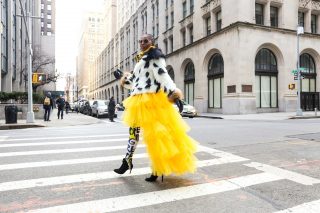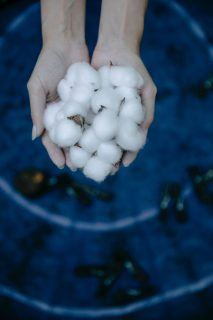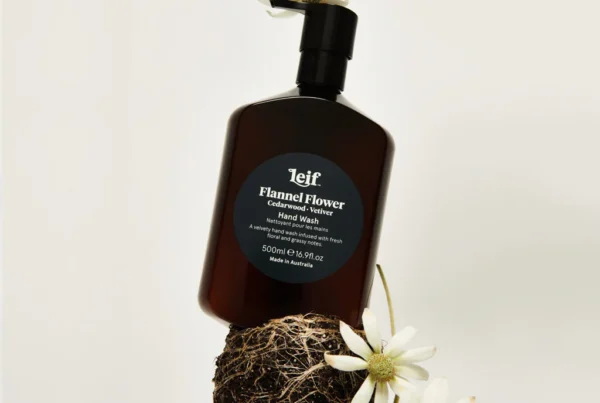Fabrics: The good, the bad, and the ugly. As the climate crisis reaches breaking point, it may seem unnecessary to think more deeply about what we’re wearing. However, with the fashion industry being the second-largest polluter in the world, there is no better time to reconsider your wardrobe than now. When it comes to buying clothes, not all fabrics are created equal. If you’re looking to help by reducing your environmental impact personally, you may want to start with your wardrobe. These are the worst fabrics for the environment.
The Basics: Fast Fashion Takes Over
Whist one might have thought that a worldwide pandemic would have changed our habits and made us look inwards when it comes to shopping, that is not the case. In the UK, for instance, fast-fashion giants Boohoo and ASOS have taken over. Since the fall of Arcadia group, ASOS now owns massive brands like Topshop and Miss Selfridge which were arguably the most profitable.

Photo by Vonecia Carswell on Unsplash
The fashion industry is one that thrives on trends. Of course, these trends are constantly changing and evolving. Essentially, this means that, as consumers, we are always looking for something new. This results in a huge turnover of clothing with many discarded pieces ending up in landfills.
So what does all of this mean for us as individuals? Well, essentially it means that changing our personal fashion habits is likely to make a massive difference. That’s great, and many of us are definitely open to changing our habits if it could help even a bit. But the real issue lies in finding out how we can do it. One of the major ways we can help the cause is by being more careful with fabric choices when buying garments. Having said that, we’ve compiled a list of some of the worst fabrics for the environment.
The Worst Fabrics for the Environment
Most unexpected: Cotton
Cotton is a bit of a strange one when it comes to its benefits or lack thereof for the environment. On the one hand, it’s a natural fiber, which means that it is biodegradable. This is one of the reasons that we as consumers tend to assume it must be good for the environment. However, what makes cotton a bad fiber is in the growing process. Cotton crops are incredibly water-intensive.

Photo by Teona Swift from Pexels
For reference, it would require between “10,000 and 20,000 gallons of water to make a single pair of jeans and up to 3,000 to make a T-shirt”. So, as a crop, its water consumption is massive. Cotton crops also require a lot of pesticides and toxic chemicals to keep the crops safe during farming. These seep into the earth and, ultimately, the water below ground.
So, even before cotton becomes your favorite pair of jeans, it’s wreaking havoc with the environment. This, of course, doesn’t even touch on the manufacturing process, which is again both water and labor-intensive. Most of us love cotton because it’s comfortable to wear, but before you go straight for it, there are a few things you should check. If you are choosing a cotton garment, ideally it should be organic or even recycled cotton
The More Obvious: Synthetics
Synthetic fibers include nylon, polyester, and acrylic. These are not natural fibers and have been created by humans. They are usually produced from oil. They also account for a massive slice of the clothing we consume. In fact, synthetics “account for 63% of the material input for textiles production”. The most common and prominent of these is polyester. No matter where you go, you’ll likely find some polyester garments. Polyester garments make up 55% of all synthetic garments produced. This is followed by nylon (5%) and then acrylic (2%).

Photo by Alena Shekhovtcova from Pexels
However bizarre it might seem, there are a couple of benefits when it comes to synthetic fibers. One of the major ones? They don’t require any agricultural land to produce. They also don’t use much water. Having said that, they do have a lot of negatives. For instance, they are not biodegradable, and they rely on petrochemical industries in order to produce the raw materials.
This means that synthetic fibers are reliant on the extraction of fossil fuels. This high usage of fossil fuels is also bad for the environment in other ways. This includes the increased likelihood of oil spills and methane emissions. Unfortunately, another issue with synthetic garments? Every single time you wash them, they release microfibers into the waterways. This is hugely damaging to marine life and the marine ecosystem.
Another fairly obvious culprit: Materials derived from animals
Again, the natural fibers are back. But, here, some are worse than others. Protein-based fibers like wool, for instance, account for only 2% of all fibers used. As long as they are not produced using any toxic substances, they can safely biodegrade. Leather, on the other hand, is a big issue. It’s responsible for a huge amount of methane output, as well as taking up a lot of agricultural lands. Methane is a real issue due to the fact that it is one of the most potent greenhouse gases (20 times stronger than CO2). Livestock is awful for the environment, accounting for a massive 14.5% of the world’s greenhouse gas emissions, according to the United Nations’ Food and Agriculture Organisation.

Photo by Ron Lach from Pexels
Each year, it is estimated that a billion animals are killed for the leather. But that’s not where the problems end when it comes to leather. The tanning process is also a major issue. About 85% of the world’s leather is tanned with chromium. Chromium is extremely toxic and can cause cancer and skin disease in tannery workers. Toxic chemicals are also sometimes used in order to preserve wool. These toxic chemicals can seep into the waterways and pollute the water which we rely on.
So, what are the better options?
Well, we know what to avoid, but then, what are the alternatives. The very best options when it comes to choosing garments are recycled man-made cellulose and bast fibers.
Recycled: The best way to be environmentally friendly is to stop creating more virgin fibers. Ultimately, all virgin fibers have an impact. So, the best option is to buy a garment that is made of recycled fabric. This can include recycled wool, cotton, and even recycled synthetics.

Photo by Ron Lach from Pexels
Man-made cellulose fibers: These are obtained from plant-based materials. These materials can be extracted from plants (often true in the case of cotton). The other option is to treat them chemically in order to produce cellulose. If produced without any toxic substances, cellulose fibers are safely biodegradable.
Bast fibers: These are sourced from plants with woody cores and fibrous bark. Examples include hemp, flax, nettle, jute, and rame. These fibers have a very low environmental impact and are, thus of great interest. All of these plants make use of much less water and generally, don’t require pesticides.





![women [longevity live]](https://longevitylive.com/wp-content/uploads/2020/01/photo-of-women-walking-down-the-street-1116984-100x100.jpg)









